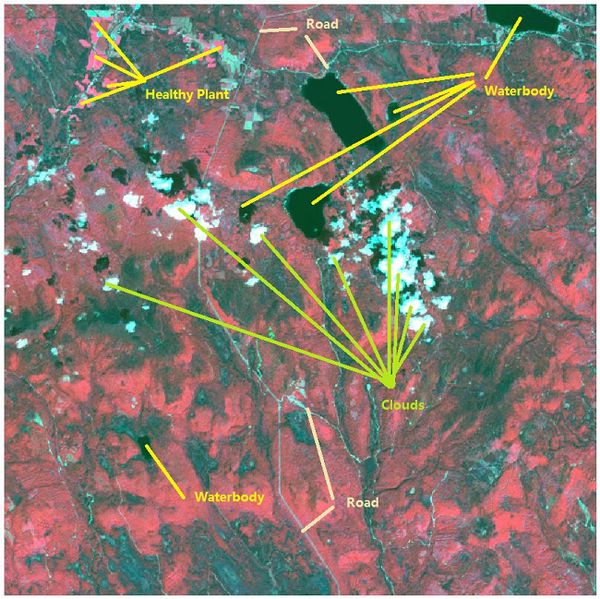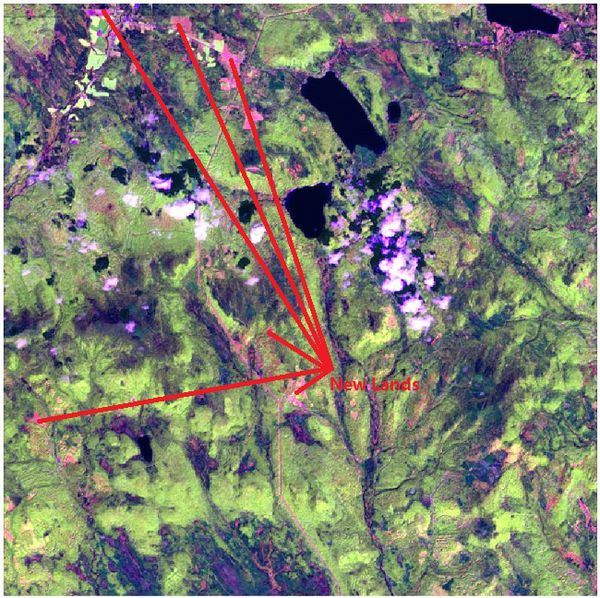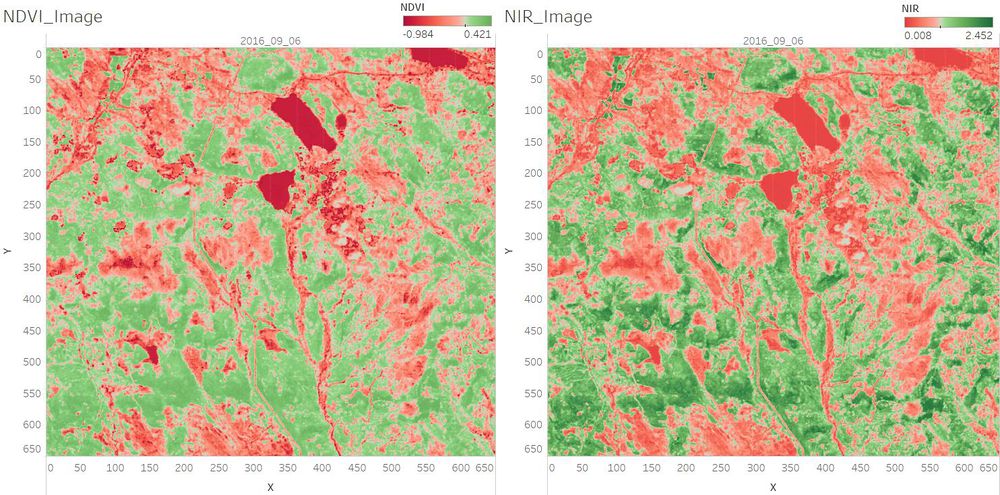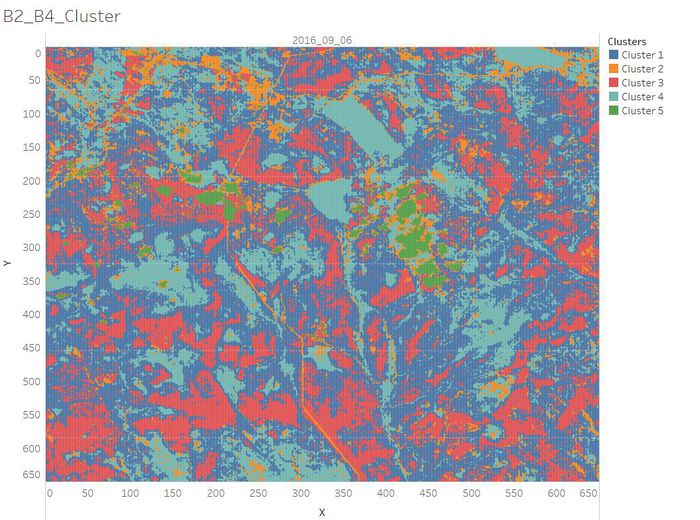|
|
| Line 88: |
Line 88: |
| | </table> | | </table> |
| | <br/> | | <br/> |
| − |
| |
| − | =Comments=
| |
| − | [[User:Ghchua.2016|Ghchua.2016]] ([[User talk:Ghchua.2016|talk]]) In your report:<br/>
| |
| − | "2. Features in the Preserve area as captured in the imagery."<br/>
| |
| − | "Band combinations(B4, B3, B2) are mapped to the RGB image channels to create the false-color image. The color of the waterbody is from dark blue to black. Red region stands for vegetation. Besides, we can recognize the clouds and roads by vision. " and <br/>
| |
| − | "Band combinations(B5, B4, B2) are mapped to the RGB image channels to create the false-color image. The red region represents new lands."<br/>
| |
| − |
| |
| − | The two false colour satellite images you have chosen were useful to show the features. You can improve on the clarity if you include your True Colour image to help novice readers understand better why the False Colours represent what you have stated above.
| |
| − | <br/><br/>
| |
| − | [[User:Priyadarshi.2016|Priyadarshi.2016]] ([[User talk:Priyadarshi.2016|talk]]) Holy Moly! was this done on tableau? the images look like something that you would get from satellites and process usin PCA or something to get this output. Amazing!
| |
| − | <br/><br/>
| |
| − |
| |
| − | From Shuo Zhang: All the graphs are very clear and easy to read and the comparisons make sense. Good job!
| |
Revision as of 11:45, 15 July 2017
VAST Challenge 2017 MC 3
Questions & Answers
Q1. The scale and orientation of the supplied satellite images.
Identified the location and coordinates of the Boonsong Lake in the satellite image as below:
The orientation of the satellite image is the same with that of the Boonsong Lake.
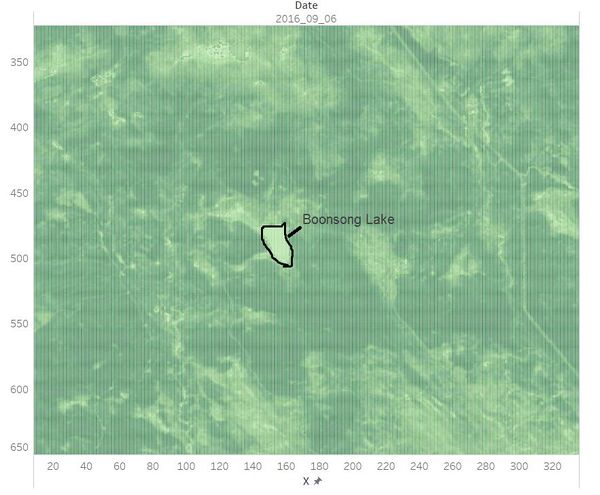
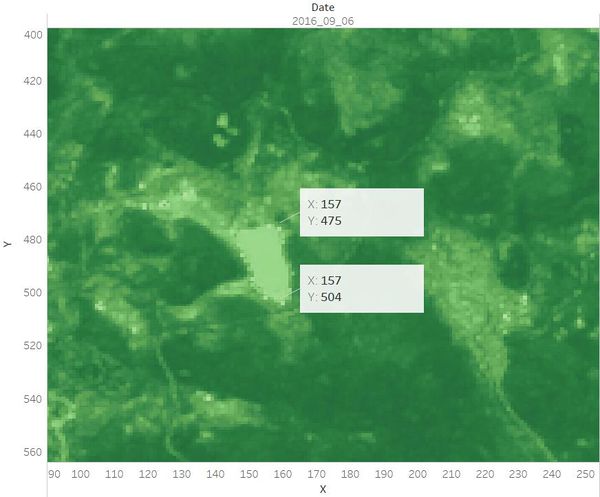
Hence, the length of a pixel is 3000/(504 - 475+1) ft, equals to 100 ft. Then the area of one pixel is 100 * 100 = 10000 square ft.
As the satellite image has 651*651 pixels, the actual scale of the region is 651*651*10000 square ft = 4,238,010,000 square ft.
The orientation of the satellite image is oriented north-south.
Q2. Features in the Preserve area as captured in the imagery.
Most of the images have sensor artifacts at the bottom right corner.
To identify the features in the Preserve Area, I picked the image which is generated from the data [image11_2016_09_06.csv]. It has no sensor artifacts at all.
Q3. Features that change over time in these images.
In general, the waterbody became more pure from 2014 to 2016. The plants which are with higher chlorophyll content became less from 2014 to 2016.
The visualization analysis results are as below.
| Visualizations | Interpretations |
|---|
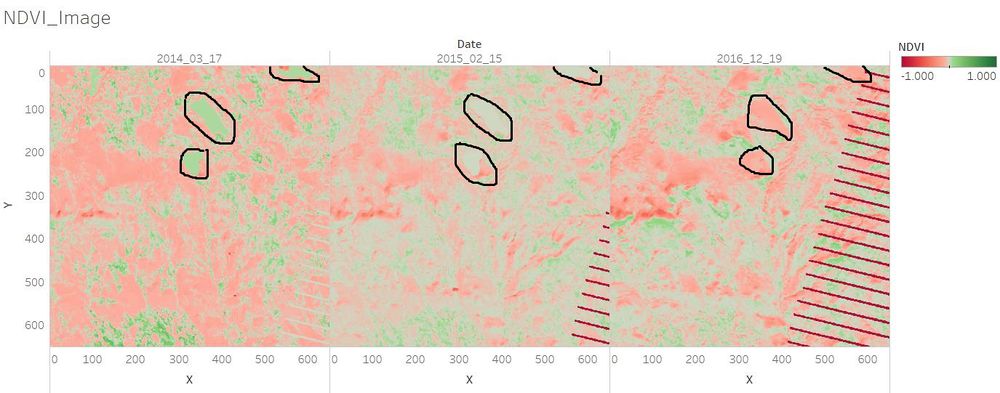
|
In March, Febraury, December, the season of the Preserve area is winter or early spring. During these periods, the NDVI value of the waterbody region should not have much difference. However, we can see from the left image that the color of the waterbody in 2014 was green and became light green in 2015, while it turned into red in 2016. We can infer that in 2014 there may be much algae in the waterbody region. |
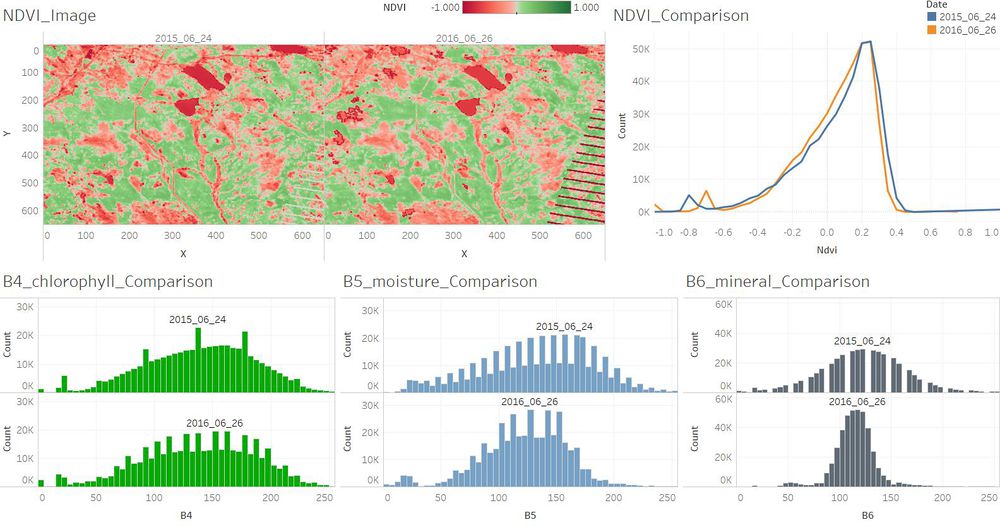
|
Compared to June 2015, the soil mineral content has changed in June 2016. And the plants which are with higher chlorophyll content became less in June 2016.
The number of the plants which are with lower chlorophyll content stayed nearly the same in June 2016. |
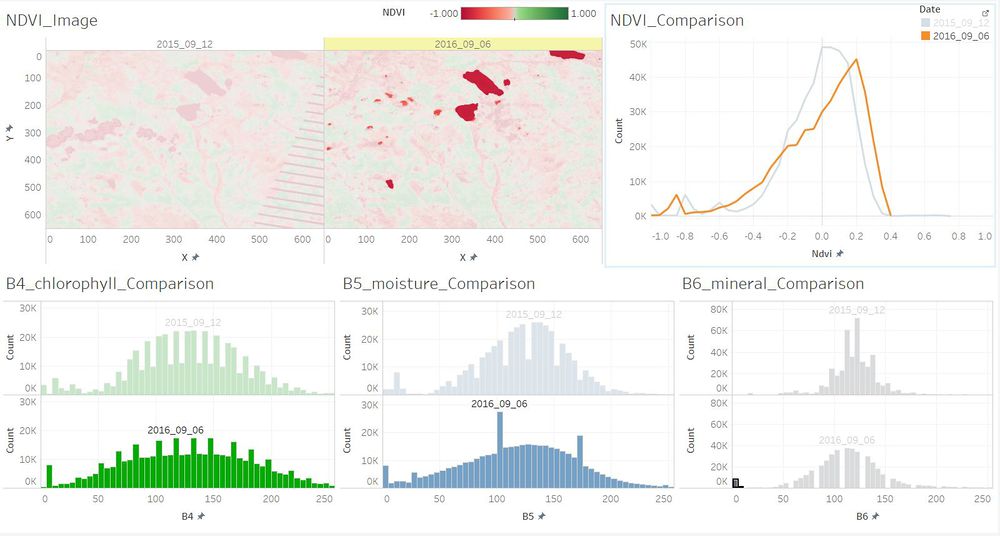
|
The number of the plants which are with lower chlorophyll content became larger in September 2016. While the number of the plants which are with higher chlorophyll content became less in September 2016. And the waterbody became more pure in 2016 as the content of soil mineral content reduced. |
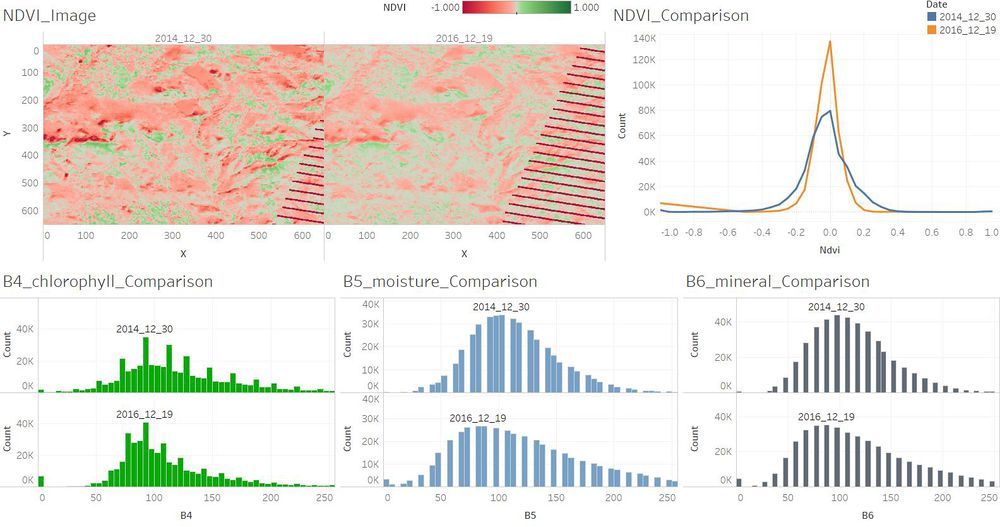
|
The plants which are with higher chlorophyll content were a little bit more in December 2014 than in December 2016. There were not too much changes between December 2014 and December 2016. |


